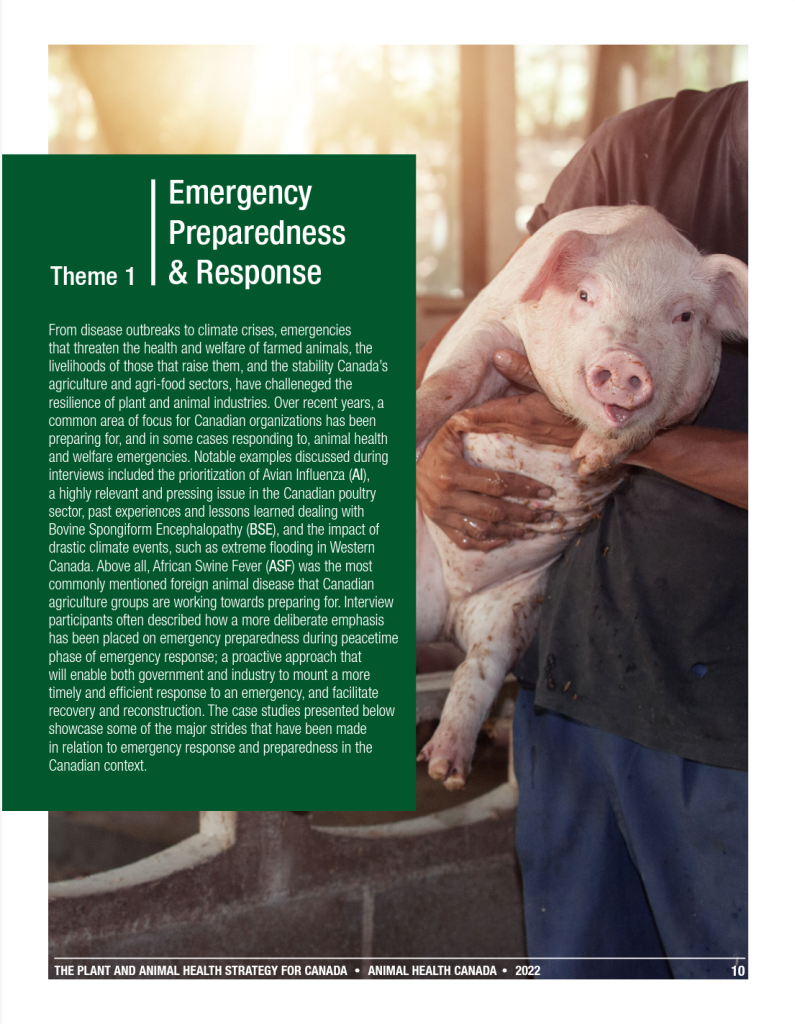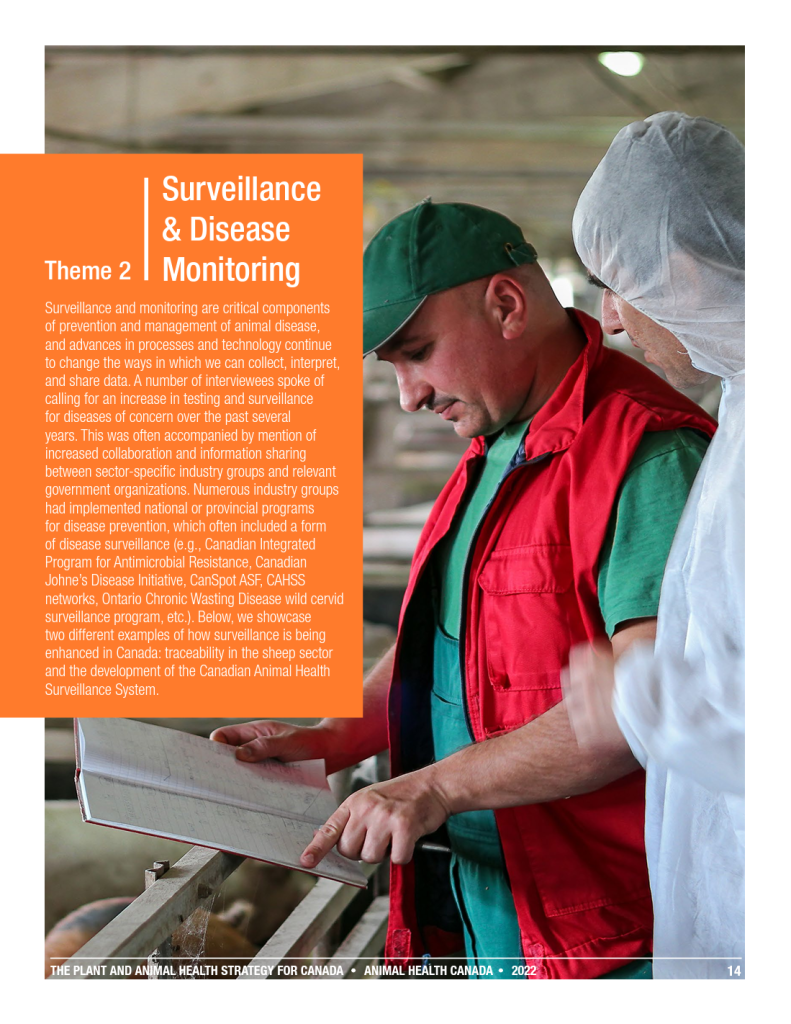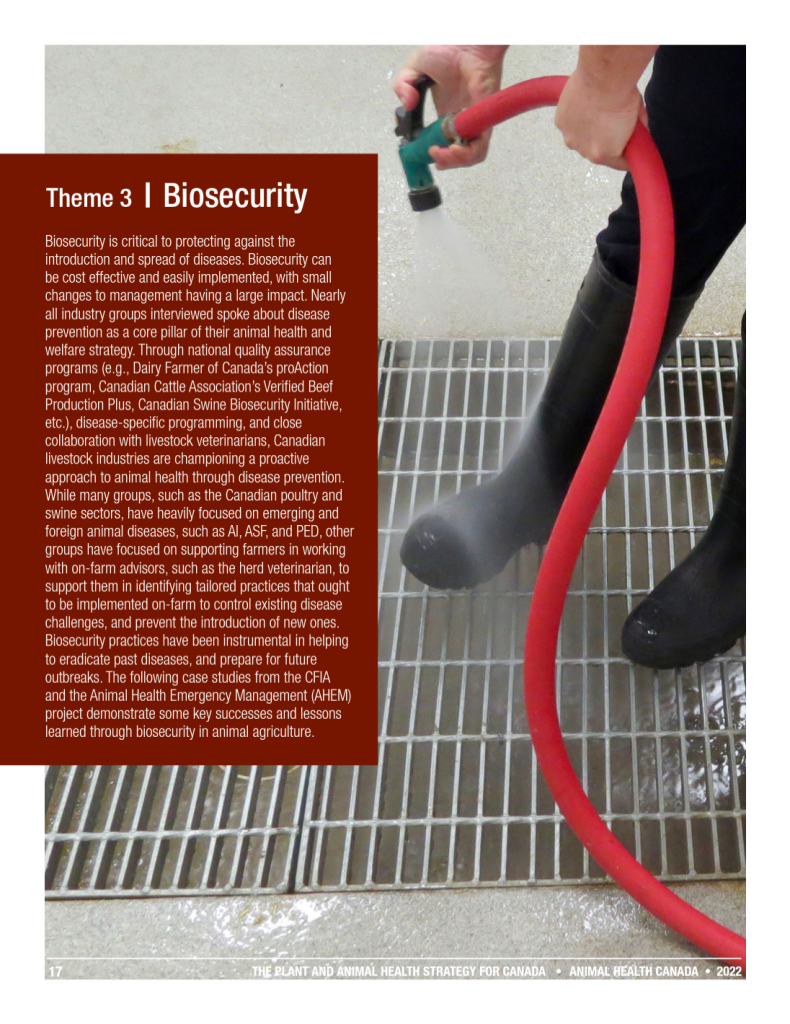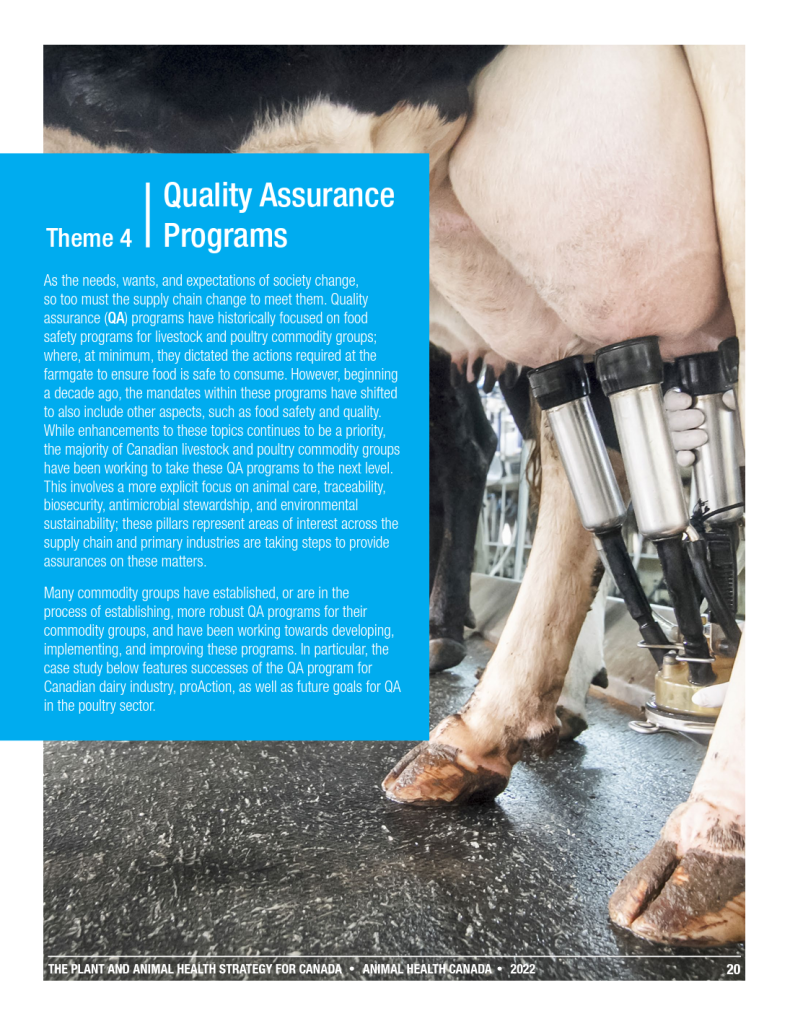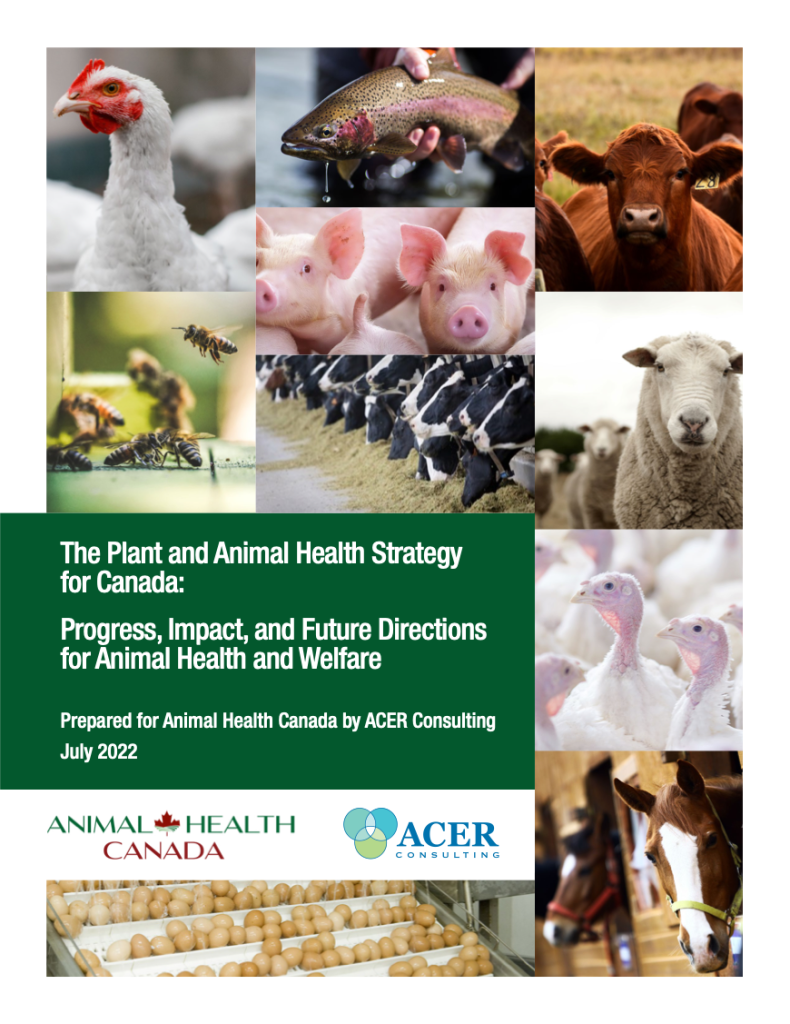Read the Full Report
Click on the document to read the full report or read the executive summary below:
BACKGROUND. The Plant and Animal Health Strategy (PAHS) was developed in 2017 by the Canadian Food Inspection Agency (CFIA) as a guiding document for the goals and objectives of plant and animal health in Canada. Development of the PAHS was led by the Canadian Food Inspection Agency (CFIA) but the document is considered to have been co developed by a wide range of Canadian partners (see Acknowledgments). The National Farmed Animal Health and Welfare Council (NFAHWC), now Animal Health Canada (AHC), was tasked with the coordination of reporting on the animal health aspects of the PAHS. To support them in this work, AHC commissioned ACER Consulting to conduct an assessment of how the PAHS has influenced animal health progress, successes, and challenges over the past 5 years. This assessment included interviews with AHC staff, industry commodity groups and partners, academia, and representatives from key government organizations.
ORGANIZATIONAL INVOLVEMENT IN THE PAHS. A total of 23 animal health organizations were interviewed using a semistructured discussion guide. Interviewees generally felt that their responsibilities under the PAHS were limited, or were not well communicated. Most major commodity groups had been consulted in the development of the Strategy, yet felt that their involvement since then has been limited, with these groups feeling that their PAHS-related roles and expectations beyond the initial consultation were not clearly communicated. In addition, major commodity groups requested additional consultation and inclusion with AHC to foster more meaningful engagement moving forward. Several interviewees indicated that the PAHS was not influential in guiding their overall strategic direction, priorities, or goals. Others felt that the PAHS was valuable to animal health and welfare in Canada, as it provided a cohesive overview of shared goals and objectives for all animal industries. Regardless of sentiments towards the PAHS, the resounding take home message from interviewees was that while the majority of the activities, progress, and successes achieved in the past several years could not be directly attributed to the PAHS itself; the Strategy speaks broadly to key areas that industry and government have already been working on and prioritizing.
ORGANIZATIONAL PRIORITIES. When asked to describe the major animal health and welfare priorities each interviewee’s organization had focused on, the most common themes related to emergency preparedness and response, surveillance and disease monitoring, biosecurity, development and implementation of quality assurance programs, addressing animal welfare priorities, supporting development and revisions of Codes of Practice, One Health and One Welfare, and antimicrobial stewardship, use, and resistance. Interviews also covered how respondents coped during the COVID-19 pandemic. The impact of the COVID-19 pandemic did not go unnoticed in Canada’s agricultural industries, with different organizations responding to this crisis in different ways. While some groups experienced extreme loss and hardship, others were able to conquer these challenges and thrive in the face of a global pandemic.
THE FUTURE OF THE PAHS. Looking at the future of the PAHS, general stakeholder sentiments suggested that while the Strategy provides a useful high-level vision for animal health in Canada, the utility of the PAHS may be limited, as it did not provide actionable items to guide industry groups in their organizational goals. When asked about future priority areas, participants noted that the previous areas of emphasis were still relevant. However, they also noted that additional areas had been added, including addressing issues with veterinary capacity and workforce shortages, industry sustainability, and preparing for and responding to the impact of climate change. Through Animal Health Canada, this is an opportunity to articulate future priorities and organizational goals based on the lessons learned from challenges associated with the PAHS and to perhaps help industry, government, and academia to co-create and operationalize a shared strategic plan. In particular, organizations feel that AHC has the potential to be a guiding body and organizational force in coordinating, collaborating, and communicating between all industry groups, government organizations, and associated stakeholders. In future planning, AHC is strongly encouraged to align its strategic goals with remaining action areas within the PAHS, taking into consideration opportunities for improvement that were identified in this report.
